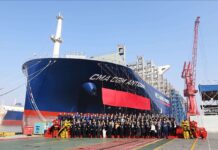
The Ports of Los Angeles and Long Beach have published the Final 2024 Class 8 Drayage Truck Feasibility Assessment Report, evaluating the readiness of zero-emission (ZE) drayage truck technologies to help meet the ambitious air quality and climate goals set out in the Clean Air Action Plan (CAAP).
The report, which focuses on battery-electric and fuel cell-electric trucks, follows a draft released in June 2025 and incorporates extensive public and stakeholder feedback. Conducted under the CAAP framework, the assessment examines ZE truck feasibility across five key areas, technical, commercial, operational, economic, and infrastructure viability.
Findings indicate a continued improvement in ZE truck feasibility since the last studies in 2018 and 2021. This trend is reflected in the over 600 zero-emission drayage trucks currently operating throughout the San Pedro Bay port complex.
The 2017 CAAP Update established targets for 100% zero-emission terminal equipment by 2030 and zero-emission drayage trucks by 2035. To accelerate this transition, the ports introduced the Clean Truck Fund Rate in April 2022, collecting $10 per TEU from diesel trucks to help incentivize ZE truck purchases through programs like CALSTARTand other state and regional partnerships.
Since the CAAP’s original adoption in 2006, the ports have achieved major emissions reductions, cutting diesel particulate matter by 90%, nitrogen oxides by 70%, and sulfur oxides by 98%. Greenhouse gas targets call for 40% reductions below 1990 levels by 2030 and 80% by 2050.
“This assessment confirms that we are making measurable progress toward a zero-emission future,” said a joint statement from the ports. “Collaboration with industry, technology partners, and the community continues to drive cleaner, more sustainable freight movement across San Pedro Bay.”





